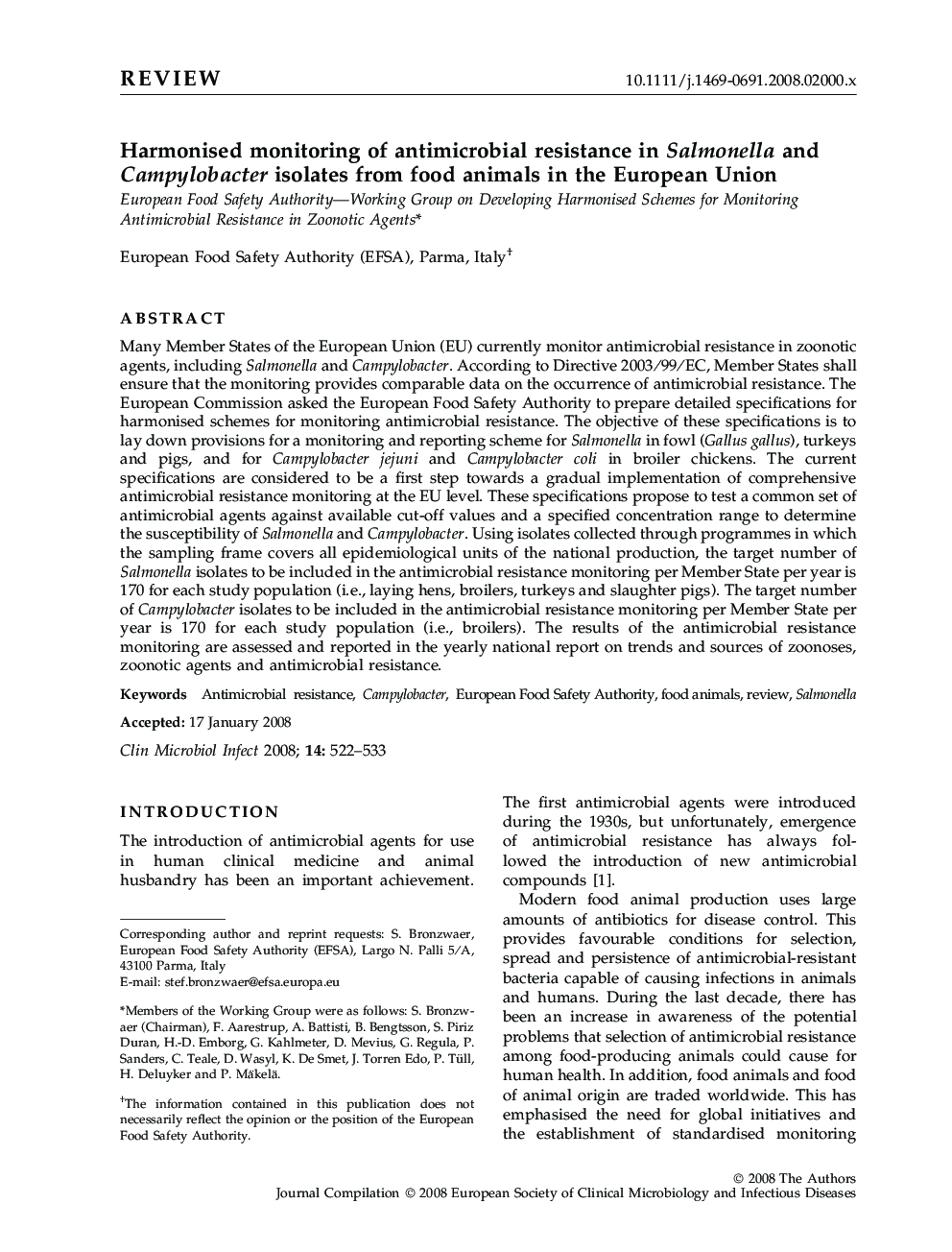| Article ID | Journal | Published Year | Pages | File Type |
|---|---|---|---|---|
| 3398629 | Clinical Microbiology and Infection | 2008 | 12 Pages |
ABSTRACTMany Member States of the European Union (EU) currently monitor antimicrobial resistance in zoonotic agents, including Salmonella and Campylobacter. According to Directive 2003/99/EC, Member States shall ensure that the monitoring provides comparable data on the occurrence of antimicrobial resistance. The European Commission asked the European Food Safety Authority to prepare detailed specifications for harmonised schemes for monitoring antimicrobial resistance. The objective of these specifications is to lay down provisions for a monitoring and reporting scheme for Salmonella in fowl (Gallus gallus), turkeys and pigs, and for Campylobacter jejuni and Campylobacter coli in broiler chickens. The current specifications are considered to be a first step towards a gradual implementation of comprehensive antimicrobial resistance monitoring at the EU level. These specifications propose to test a common set of antimicrobial agents against available cut-off values and a specified concentration range to determine the susceptibility of Salmonella and Campylobacter. Using isolates collected through programmes in which the sampling frame covers all epidemiological units of the national production, the target number of Salmonella isolates to be included in the antimicrobial resistance monitoring per Member State per year is 170 for each study population (i.e., laying hens, broilers, turkeys and slaughter pigs). The target number of Campylobacter isolates to be included in the antimicrobial resistance monitoring per Member State per year is 170 for each study population (i.e., broilers). The results of the antimicrobial resistance monitoring are assessed and reported in the yearly national report on trends and sources of zoonoses, zoonotic agents and antimicrobial resistance.
